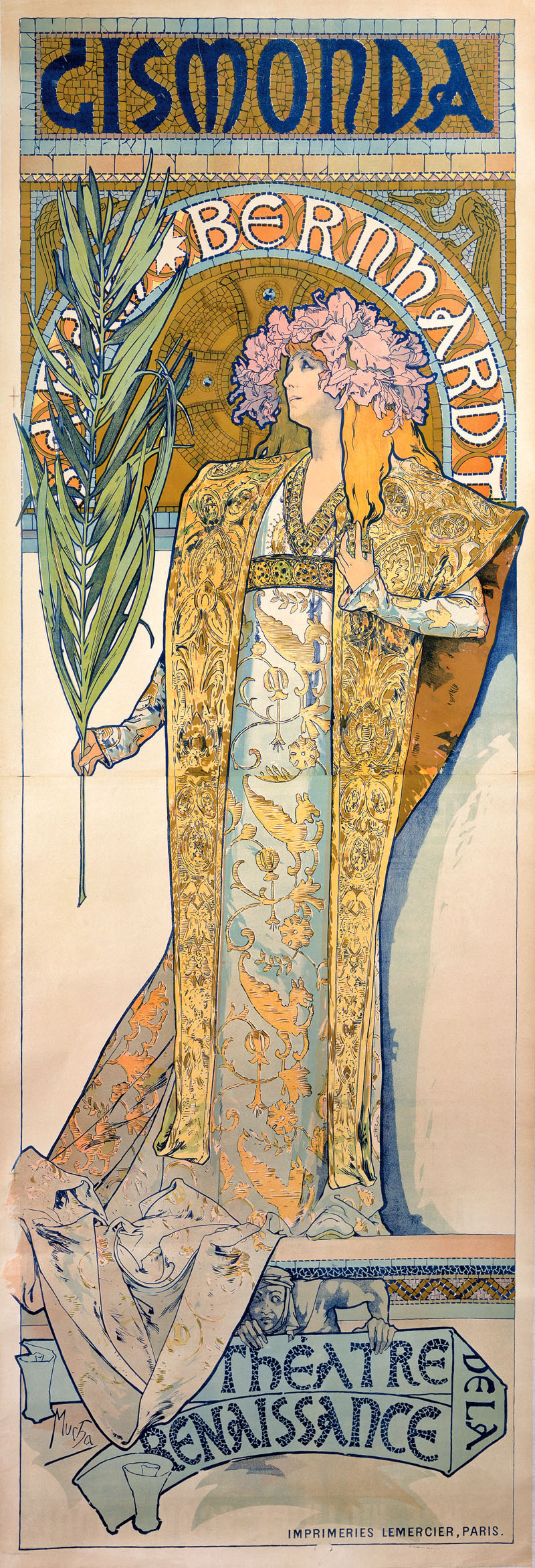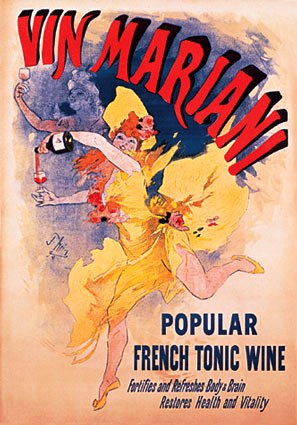
Fig. 1. Gismonda, Alphonse Mucha, 1894 (Art Renewal Center)
The huge poster created by Alphonse Mucha, Gismonda, appeared relatively interesting to me as it reminded me somewhat of the Byzantine art with its use of yellow and brown. (I, later on, found that Mucha came from Czech and was, therefore, very much inspired by the Byzantine art – he “regarded Byzantine civilization as the spiritual home of Slavic culture”.) (Mucha Foundation)
Gismonda poster was done using chromolithography and was commissioned by Sarah Barnhardt, a Parisian actress and director, to promote for the new production in early January 1895. Despite the lack of experience in poster design, Mucha created this in merely 6 days and this was what made him famous. That got me curious and therefore, I decided to research further.


Fig. 2. Eldorado Music Hall, Jules Cheret, 1894 (Victoria and Albert Museum) | Fig. 3. Vin Mariani, Jules Cheret, 1894 (Collection Angelo Mariani)
During that period, the colour schemes used in poster designs were bolder (Pound), as seen from the examples above by Jules Cheret, who was very much in demand then. (Jules Cheret Biography) Also, the figures that appeared in Cheret’s posters were dynamic.
Gismonda, on the other hand, stood out from the rest with its muted pastel palette and stillness of Barnhardt in character. This work was revolutionary as no other works had the same extremely narrow composition with an almost life-size figure. This format could likely be inspired by the Japanese scrolls which were heavily imported into France then. (Pound)
His partnership with Bernhardt after this provided him with more opportunities to develop artistically, alongside with more commissions and eventually, a commercial contract from Ferdinand Champenois, the Parisian printer. With roots from Czech, his works started to include Slavic motifs in the form of florals eventually. Those “natural motifs and flowing, organic lines” in his works, led to his association with Art Nouveau and its significance in the popularization of the movement’s aesthetics. (Pound)
References:
- “Biography of Jules Cheret.” Jules Cheret – The Complete Works – Biography, 2017, http://www.jules-cheret.org/biography.html.
- “Byzantine Heads (pair) (1897)”, Mucha Foundation, 2019, http://www.muchafoundation.org/gallery/browse-works/object/240.
- “Collection Angelo Mariani.” LA BIBLIOTHEQUE ELECTRONIQUE DE LISIEUX, http://www.bmlisieux.com/litterature/bibliogr/mariani.htm.
- “Eldorado Music Hall: Chéret, Jules.” Victoria and Albert Museum, 2017, https://collections.vam.ac.uk/item/O1037601/eldorado-music-hall-print-cheret-jules/.
- “Gismonda by Alphonse Maria Mucha.” Art Renewal Center, 2019, https://www.artrenewal.org/Artwork/Index/4431.
- Pound, Cath. “How Alphonse Mucha’s Iconic Posters Came to Define Art Nouveau.” Artsy, 13 Nov. 2018, https://www.artsy.net/article/artsy-editorial-alphonse-muchas-iconic-posters-define-art-nouveau.